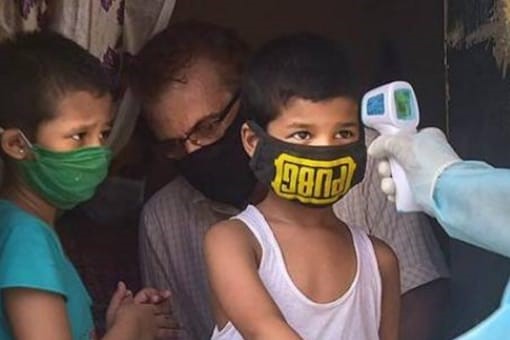
Third wave likely in Oct: Are we prepared to treat our children?

As the nation gears up for a possible third COVID wave in September-October, the most pertinent question that begs an immediate answer is: Are we prepared to treat our children, who are likely to be the prime target this time? Unfortunately, the present health infrastructure in the country is far from what is required, noted the National Institute of Disaster Management (NIDM) in its report to the Prime Minister’s Office (PMO).
The NIDM has clearly sought better ‘paediatric facilities’, just in case a large number of children get infected. The institute, which falls under the Ministry of Home Affairs (MHA), said there is not enough evidence to prove a third COVID wave will affect children more than adults, but said that as long as a large number of those below 18 remain unvaccinated, a threat of infection is “a cause for worry, if not panic”.
The first wave peaked in September 2020 and the second wave in May this year. Scientists say that the third wave may affect children more because they are unvaccinated.
The report submitted to the PMO said that India’s paediatric care, including doctors and equipment, are grossly insufficient and needs to be upgraded at the earliest.
Think beyond health infrastructure, say doctors
While hospital infrastructure is a necessity, doctors say it may not suffice. They say paediatric care for COVID-positive children will need better logistics, a large number of specialised doctors and nurses, ambulances, beds among other things that are right now meant for adult patients.
“Children, if admitted, will need at least one parent with them. Such parents will have to be provided with a PPE suit. Similar arrangements will have to be made for food and stay of the parent. The hospital staff too will have to be trained to take care of children in case they throw tantrums,” said a doctor associated with Government Medical College, Nagpur.
The NIDM report stated that new paediatric facilities should accommodate children and their parents. This will address the challenge of mental and emotional impact of hospitalisation.
Also read: Can’t hold a gun to people’s head: Experts on Kerala’s COVID numbers
At times children may not cooperate during treatment. “What if a six-year-old does not allow the intravenous line to stay? So the hospital will need nurses 24X7 to take care of such small little things. Manpower will be required to clean up their beds in case children soil them. Also they may need some form of entertainment during isolation, which will add to the hospitals’ expenditure,” said another doctor.
In addition, if the child is malnourished, he or she may need protein supplements. “We need to ensure children get their routine doses of vaccines like measles, influenza, hepatitis-A, chicken pox, etc. Besides, newborn Intensive Care Units will need one nurse per child, while paediatric wards will need one nurse for every three children,” Dr Srinivasa S, Chairperson, Indian Medical Association Standing Committee for Child Health, told the New Indian Express.
While the Centre and individual hospitals have their tasks cut out, states, on their part, need to construct new hospitals for children. Special tasks forces are looking at maintaining adequate stocks of critical equipment, medicines and oxygen.
Reopening of schools
Does the Zydus Cadila’s three-dose RNA vaccine for children mean schools can reopen? Maharashtra, which was the worst affected by the pandemic, isn’t very enthusiastic about the new jab. Deputy Chief Minister Ajit Pawar said the state’s COVID task force thinks that schools should reopen only after Diwali.
“Some parents and managements of schools/colleges think that the government shouldn’t wait for too long. They want schools to be opened in districts with a zero per cent COVID-19 positivity rate. The final decision will be taken by the chief minister though,” Pawar said.
A World Bank report, however, suggests schools can re-open with minimal risk of virus transmission. It emphasises on awareness campaigns to familiarise children with COVID protocols, protect children in rural areas and from disadvantaged communities, and, understand well that children are not a homogeneous group and the policies cannot be the same for all the children.
Generally speaking, the NIDM report suggests that increasing the pace of vaccination can significantly slow down future waves.
At the current pace of vaccination, India is likely to fall well short of the target of vaccinating 34 per cent of its population by the end of the year. There is also an urgent need for awareness campaigns to help people overcome vaccine hesitancy (reluctance to get vaccinated) and apathy (believing there is no need because the pandemic is over).
India has given over 58 crore vaccine doses to date. However, only 13.1 crore have received both doses.
Co-morbidities in children
Justifying the need for immediate vaccination in children, the NIDM drew the PMO’s attention towards concerns of co-morbidities. Government data too suggests that about 70 per cent of COVID-positive children have co-morbidities.
Vaccine options for children
The government recently approved domestic manufacturer Zydus Cadila’s three-dose RNA vaccine for children above the age of 12, which gives hope that the vaccination drive for under 18 may start soon. Union Health Minister Mansukh Mandaviya has hinted that the rollout may start in September.


